One of the obvious things that a traveller to other cultures would do is look into the local beliefs and customs. Well, maybe not all travellers - we also seem to run into the crowd that's looking for the local drug dealers and the titty bar. But being of a quasi-religious bent myself, I'm naturally drawn to this stuff.
The other day, for example, as we were hiking up a local peak that overlooks Lake Atitlan, the guide led us to a hidden Maya ceremonial site. Frankly, it wasn't much to see (no Mayans around, except for the guide) but I could pick out the flat rock with the cold embers upon it. Clearly some sacred fire gets lit here, though what else occurs I can't guess. I asked who comes here and was told it's the old guys, those in their 60's and 70's, those who still remember the prayers and customs. Right! Just like any shul I know! Some things are universal.
Of course, reflecting back on my synagogue experiences, I know that there is always the one that a person goes to and the one that (fooey!) (s)he wouldn't set foot in! So if I ever become a follower of Maximon, I've already got those two figured out.
The go-to has already been described by guest blogger, Elie. That blog, if you haven't seen it, also contains photos. When we were in Antigua we did a bike trip through the countryside ending up a the town of Itzapa. That's where we visited a shrine to Maximon. Maximon is a fusion of Catholic and Mayan belief systems - the merger of Maam, a bringer of fertility but also of raucous sexuality, and St. Simon, who did I don't know what. So folks venerate Maximon / St Simon for his wonderful power to deliver on your prayers (a role usually played by Mary in these parts), but they also know he's a bad-ass dude that you don't mess with. Statues of Maximon usually show a fellow dressed as an 18th century European, but without arms or legs. Seems that one day while all the men were in the field working, Maximon slipped into town and slipped into their wives. So, armed with their machetes.....
None of which seems to diminish their worship of him. But maybe it's like the Godfather - you do him favors in the hopes he'll return them. What favors can you do for Maximon? Well, he likes to drink and smoke so you can keep him well supplied.
In the courtyard of the Itzapa shrine were Smokers For Maximon. Guys (and some women) with big fat, fat cigars which they were speed-puffing while they faced into the shrine. At their feet lay an arsenal of stogies, ready for service to The Divine. The courtyard was alive with fires everywhere - chanting people were tending bonfires which were carefully surrounded by greenery (green for the money they want Maximon to send them) and flower petals and which they would bring to a roaring flame by liberally dousing it with rum. For you-know-who.
I have sometimes tried to imagine the courtyard of The Temple in Jerusalem, with priests and Levites everywhere managing the sacrifices of various visiting families. Watching the intentionality and the anarchy of that courtyard, I start to get a sense.
But more awaits us inside. As we enter we pass a three-piece combo on guitar, accordion and beer can doing a non-stop serenade of the attendees. At the front of a large room is Maximon, smoking a cigarette. Of course, since he had no arms it's a little hard to manage the butts, so a respectful attendant is scraping off the ashes (for later curative use) and swapping in a fresh one. Tables fill the shrine, covered in burning candles as families come in to add more. And they smoke. And they eat. And they drink. Rum and Coke. As Elie and I move around in amazement, freely taking pictures, one woman calls us over and pours us hefty shots of rum. Drink to Maximon! We deferentially toast the big guy (you don't want to offend the Godfather) and knock it back. I passed on the Coke. Along the side, below all the plaques testifying to Maximon's miracles, is the long line-up of locals of all ages. Sort of like visiting Santa Claus, but when you finally stand in front of him (remember - no knees) a local spiritualist takes the bundle of herbs you brought, douses it in perfume (and some hot sauce? We couldn't be sure) and beats you with it and grinds it into your scalp. Then, if you've been good (or the right kind of bad), Maximon, like Santa Claus, will deliver. Especially if you remember, before stepping away, to pour a can of beer or a hefty shot of rum over the statue.
The one I (fooey!) would not go to is the more famous one in Santiago de Atitlan. That's a town a boat ride away from San Pedro, the Lake Atitlan town where we're currently staying. That Maximon has no permanent residence, but moves from home to home every year on St. Simon day. Apparently it's a great honor to house the old letch and keep him supplied with booze and cigarettes. It also makes finding him very difficult for all the tourists who have been told they should. Not to worry - the minute you step off the boat a swarm of street urchins will offer to take you. For a slight fee, of course. We shook off the young entrepreneurs and headed for the market. Later, by asking people who were stuck inside real stores, we got directions to his current home. What a dump! Some dingy storage room in an obscure courtyard, with one candle burning and four dispirited men sitting in the gloom. And not even smoking! A few monosyllabic responses to our questions, punctuated with a stated fee for taking a picture of Max. It was hard to see this pathetic desiccated experience as related at all to the sheer energetic zaniness of Max #1.
But different again was the Fiesta of St. Thomas in Chichicastenango (just call it "Chichi" - everyone else does). Now again I must confess my deficiencies in hagiology, but I don't know who Santo Tomas was or how he got picked as patron saint of this Mayan/Catholic town. But his feast day, as well as the week leading up to it, are a big deal in this town. There are special masses, of course. Another feature is displays by voladores - four guys who hang by their ankles from a tall pole, slowly spinning around it and unwinding themselves gradually to the ground. Unfortunately we were only there for the feast day itself, not the lead-up week and, to our disappointment, the voladores don't happen that day. Neither, as far as we could see, did Mass. But there sure were things happening at the church. The roaring sound of explosives drew us toward the action. Young men launched powerful concussion fireworks from metal tubes on the church steps. Huge crowds gathered in the plaza in front. A parade of sacred floats - giant effigies of I don't know who all surrounded by massive backdrops of colored feathers - worked their way through the tight crowd and were jostled up the church steps into display position . Meanwhile, elsewhere in the crowd, a large ring of ornately costumed and masked European nobility did stately dances in a courtly mockery. A hundred meters beyond them another sector of the crowd watched as another group of elaborately costumed dancers, these with big moustaches and sombreros, parodied the Mexicans. And running along a side of the square, a raised stage held the banner of The Association For Folkloric Dancers and some announcer on the distorting sound system kept up a steady barrage of excited hype in Spanish and Mayan. From time to time he would stop and a band of guitars, trumpets and drums took over, pouring music into the square. At the same time, twenty meters away on another stage, a marimba band was pouring out a conflicting contribution. And twenty meters in another direction a couple of singers with scanty-clad dancing girls added their own cacophony to the mix.
Suddenly the cofradre appeared - the local elders of the church (or local cult) - dressed in Mayan costume of colourful hats, red shawls over black jackets and knee-length pants. Carrying silver monstrances they ascended the church steps and knelt at the door. Then the fireworks truly began. Large strings of fireworks were tossed into the plaza. Colored explosive rockets went off over the church. One of the cofradre members took a basket enveloped in fireworks and danced up and down the steps with shooting flames held out at arms length. The cofradre then left the church door and settled at a long table below the announcer, with a row of traditionally robed Mayan women standing behind them as a sort of honor guard, while locals came up and kissed their hands or swapped jokes. This set the stage for a major escalation in firepower on the church steps. Concussion bombs were being launched about every 15 seconds. Someone laid out a huge string of firecrackers, three deep and about twenty meters long, along the church steps. Going off, one might have thought that the guerilla war had returned and the church under attack. Then another 20 meters got laid out and lit. Then 40 meters, wrapping along the front of the church and swinging back again. The bands played, the "Europeans" danced, the announcer harranged and all was drowned out by the constant din of fireworks. As far as I can tell, in Guatemala religion & culture are synonymous with fireworks.
I say that because I just experienced Christmas. How, I wondered, would a deeply traditional people such as these observe this holy day. Well, it's true that there were hundreds of people in the big plaza in front of the Catholic church on Christmas eve. All the women and girls were wearing some form of checked shawl I had never before seen. Eight men played marimba and guitar while a choir of dozens of youngsters sang hymns. The lineup of men and women waiting to receive communion snaked through and around the plaza. But that was really only the warmup act. All evening the city had sputtered with street fireworks and the occasional airborne burst of colour. "And, lo, it came to pass at midnight." Suddenly, as Christmas Eve gave way to Christmas Day, the whole town exploded! Rocket missiles shot up from courtyards. Massive chains of firecrackers were thrown into the streets. On all sides starbursts lit up the city. For twenty minutes the city was a nonstop orgy of veneration of the birth of Our Lord, Gunpowder.
By the way, you will be forgiven for thinking, as I had, that this is a Catholic country with residual elements of Mayan practice. In fact, Catholicism is on the wane as this area swings more and more toward Evengelical practice. This town is filled with congregations labeling themselves Baptist, Pentacostal, House of Emmanuel, Children of God, etc. You can understand the appeal - in contrast to the Catholic top-down relationships played out in imposing edifices using prayers from 3000 years ago Judea sung to melodies from 300 years ago Germany, the Evangelicals are led by men and women dressed in conventional garb speaking Spanish or Mayan inside simple storefront meeting halls singing songs written in recent years set to guitar or keyboard. And it is the Evangelicals, the up and coming new kids on the block, who are most antagonistic to the persistence of cultic practices such as the Mayan prayer cave, the shrines to Maximon or the cofradres of Chichi. They may stand a chance in their culture war against these entrenched forces. But in face of the True Religion of Guatemala, they've thrown in the towel and toss fireworks with the rest of them.
Avi
---------------------------------------
PS Taking shots in Chichi, with stuff exploding all around me, has eliminated any fantasies I ever had about being a war reporter/photographer.

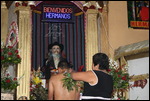
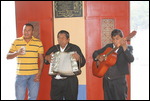
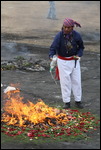
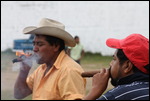
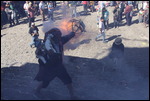
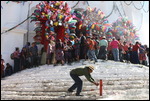
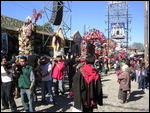
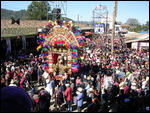

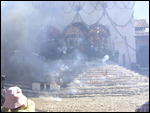
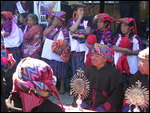
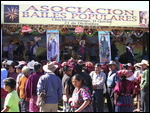
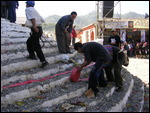
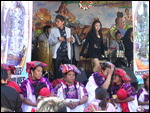

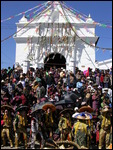
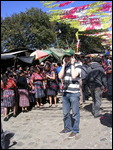

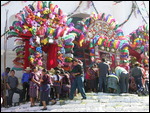
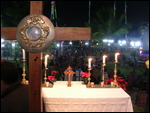
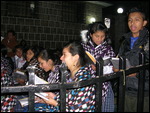
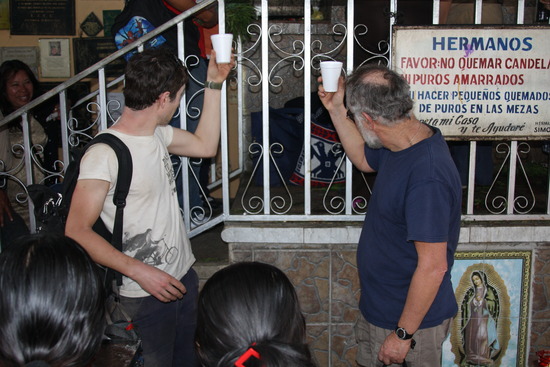
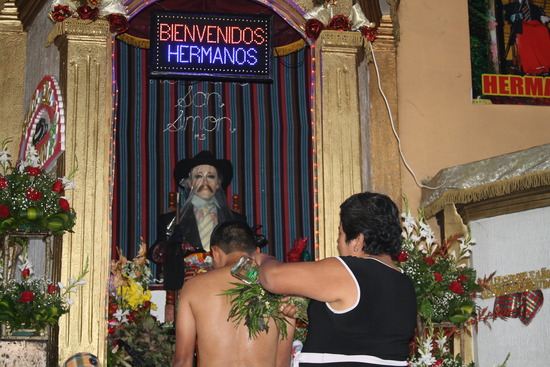
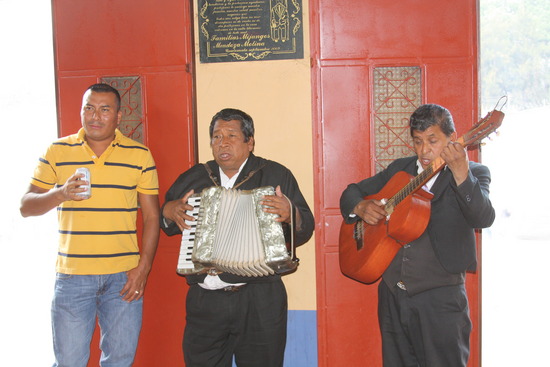
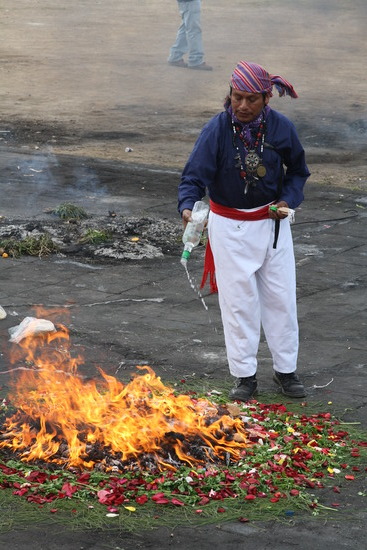
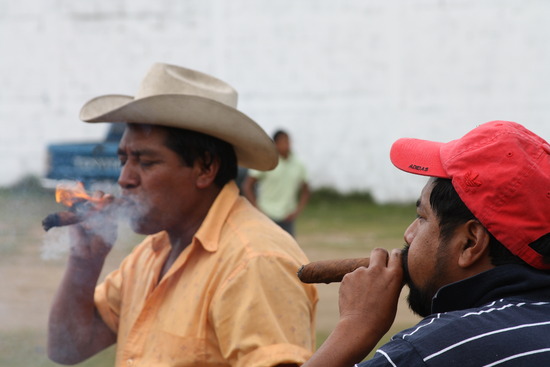
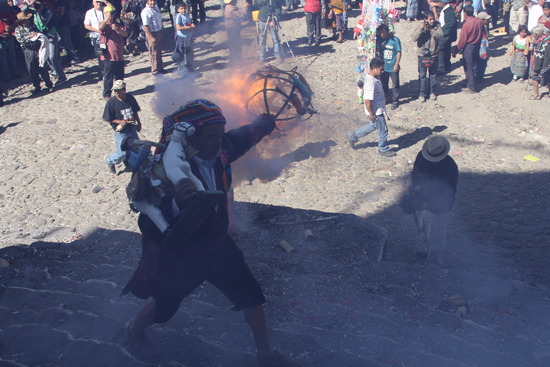




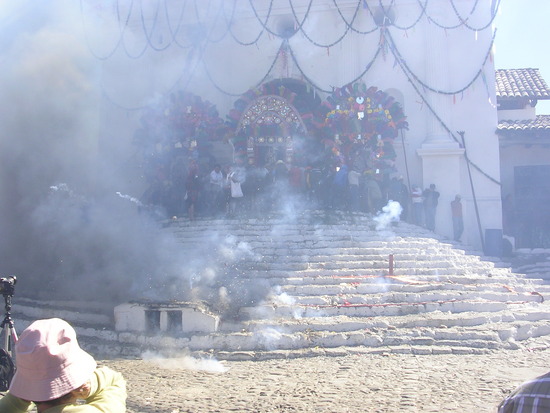
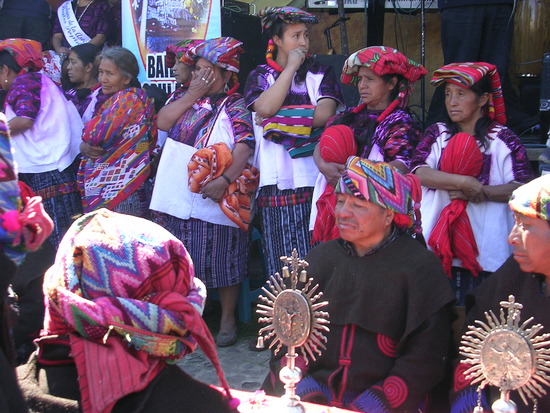




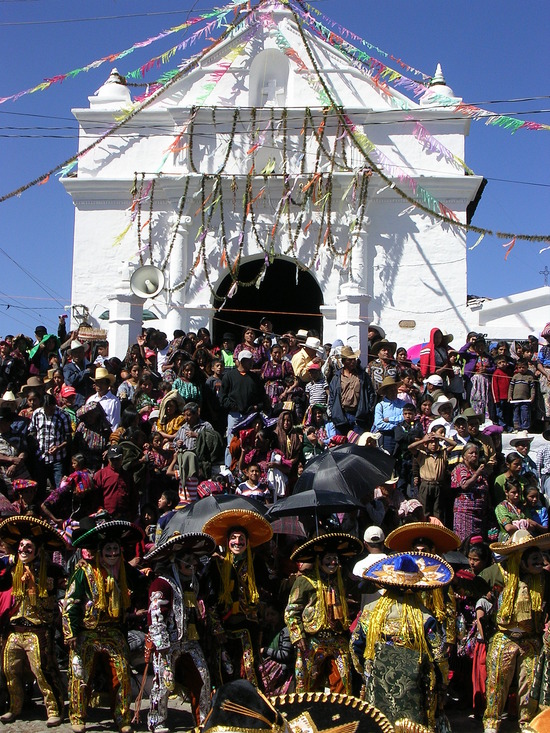
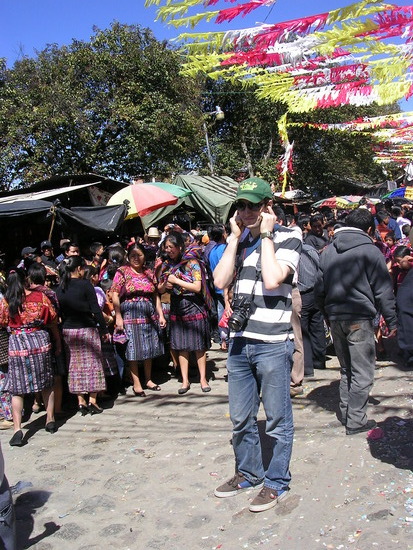

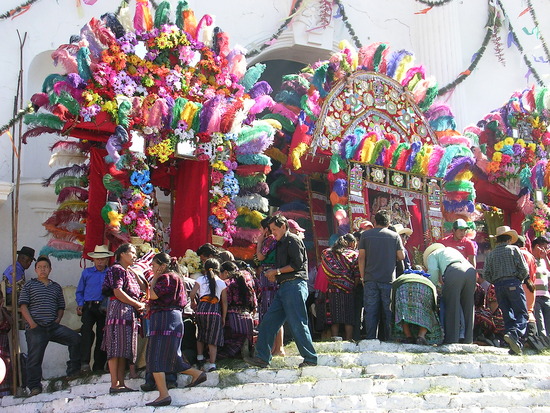
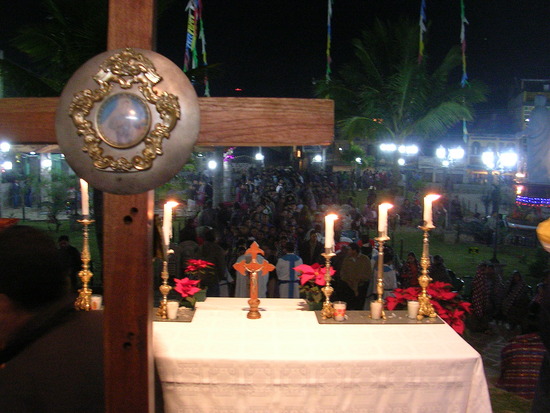
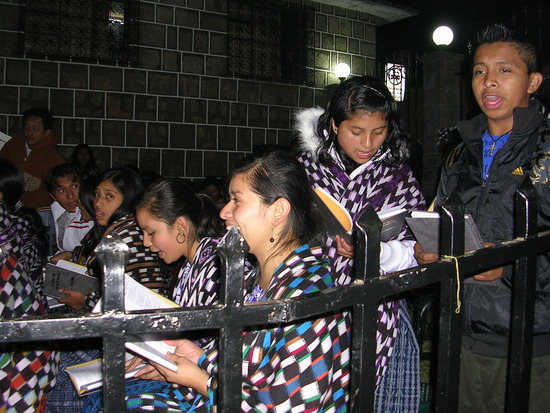
Comments